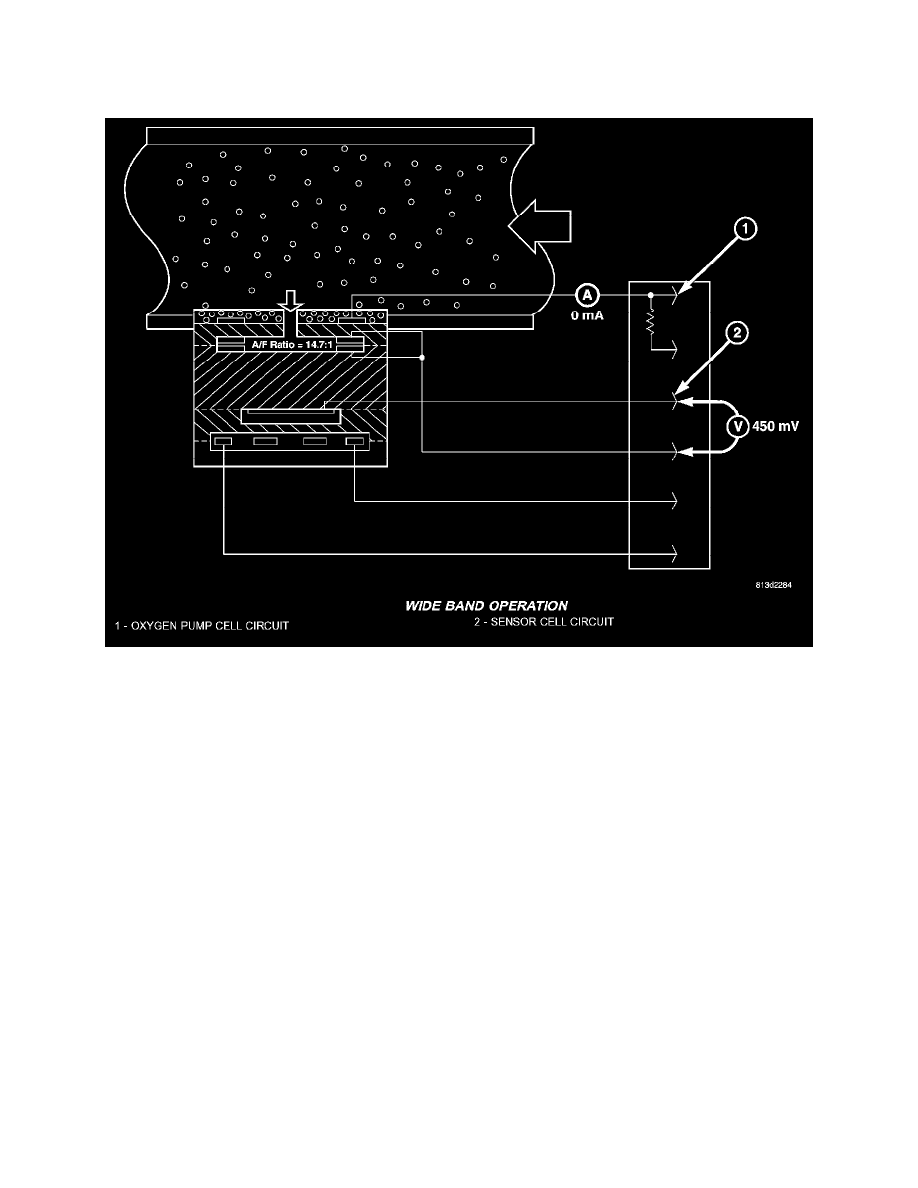Sprinter 3500 L5-2.7L DSL Turbo (2004)

The same hold true if the process is reversed. If voltage is applied to the platinum electrodes, oxygen can be pumped from one side of the solid
electrolyte to the other (from cathode to anode), becoming an oxygen pump. The amount of current flow is directly proportional to the amount of oxygen
pumped by the sensor. When the oxygen level on the supply side reaches zero, the current stops.
Wide Band Operation
The ECM activates the integral heater element to raise the temperature of the sensor to 700°C (192°F). for the ZrO2 to become conductive. The heater
element is designed to reach temperature with in 8 seconds and maintaining it at this level. In cold temperatures, this can be delayed up to 5 minutes to
prevent damaging the ceramic coating of the sensor from water condensation. Once the sensor is heated, the exhaust gas components diffuse through the
gas sample chamber. Upon reaching the electrodes on the oxygen pump and concentration cells they reach state of thermodynamic balance.
The sensor cell measures the difference between the oxygen concentration in the gas sample chamber and the oxygen concentration in the outside air
from the reference air channel. A small voltage is generated across the sensor, which is proportional to the air-fuel ratio in the sample chamber. At
stoichiometric ratio (14.7 lbs. of dry air to 1 part fuel), the corresponding open circuit voltage at the sensor cell is 450 mV. If the stoichiometric ratio in
the sampler chamber is higher than 1 (excess air) a lower voltage is produced. If the stoichiometric ratio is lower than 1 (insufficient air) a higher voltage
is produced.
The ECM uses this voltage signal to determine how and when to run the oxygen pump cell. The goal of the ECM is to modulate the pumping current
through the pump cell to always maintain stoichiometric air- fuel ratio (14.7 to 1) in the gas sample chamber. When stoichiometry is reached, there is no
current flowing to the oxygen pump.
High Excess Air Mode When the exhaust gas is too lean, the oxygen concentration in the gas sample chamber is high. The sensor cell measures the
difference between the oxygen concentrations in the simper chamber and the reference air channel A voltage lower than 450mV is generated across the
sensor cell, which is proportional to the air-fuel ratio in the sample chamber The ECM compares the sensor cell voltage with the reference voltage (V
Ref), which corresponds to the stoichiometric point voltage Since sensor cell voltage is lower than V Ref, the ECM determines a lean condition exists
Am amplifier applies an appropriate voltage to the pump cell to transfer oxygen from the gas sample chamber
Low Excess Air Mode With low excess air mode, the oxygen concentration in the gas sample chamber is low The sensor cell measures the difference
between oxygen concentrations in the gas sample chamber and the reference air channel A voltage higher than 450 mV is generated across the sensor
cell, which is proportional to the air-fuel ratio in the sample chamber The ECM determines a low excess air condition exists The polarity of the pump
cell is reversed and so is the direction of the current flow.
